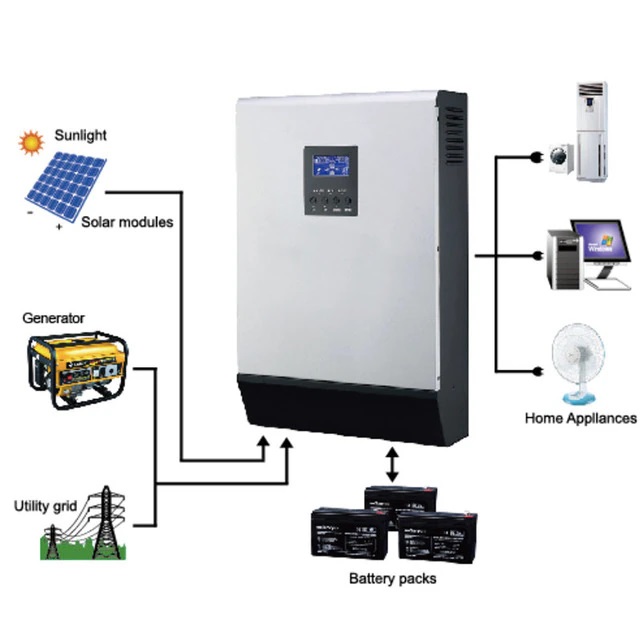A hybrid inverter, also known as a solar hybrid inverter or multi-mode inverter, is a critical component in a solar power system that is designed to work with both solar panels and energy storage systems (typically batteries). Its primary function is to manage the flow of electricity between various sources, such as solar panels, batteries, and the grid, to optimize energy production, consumption, and storage in a seamless and efficient manner. Here’s what a hybrid inverter does in a solar system:
- Solar Power Conversion: Like a standard solar inverter, a hybrid inverter converts the direct current (DC) electricity generated by solar panels into alternating current (AC) electricity that can be used to power your home or fed back into the grid. It optimizes the conversion process to maximize the electricity generated by your solar panels.
- Battery Charging and Discharging: A key feature of hybrid inverters is their ability to manage energy storage systems, such as batteries. When excess electricity is generated by the solar panels and not immediately consumed by your home, the hybrid inverter directs this surplus energy to charge the batteries for later use. Conversely, when solar generation is low, the inverter allows you to draw electricity from the batteries to power your home, reducing your reliance on the grid.
- Grid Interaction: Hybrid inverters can also interact with the electrical grid. They enable you to feed surplus energy generated by your solar panels back into the grid when your batteries are fully charged and when you are generating more electricity than your home can use. Conversely, they allow you to draw electricity from the grid when your solar panels are not producing enough power or when your battery reserves are low.
- Backup Power: In the event of a grid outage, hybrid inverters can provide backup power from the batteries to essential loads in your home. This is a valuable feature for ensuring uninterrupted power supply during power outages, especially in areas with unreliable grid power.
- Energy Management: Hybrid inverters often come with advanced energy management and monitoring capabilities. They can prioritize the use of solar power, batteries, or grid power based on user-defined settings or real-time energy pricing. This allows homeowners to minimize grid dependence and save on electricity costs.
- Load Shifting: Hybrid inverters enable load shifting by storing excess solar energy in batteries during the day and using it during peak demand periods or when electricity rates are higher, helping to reduce energy costs.
- Grid Export Control: In some regions, hybrid inverters allow you to limit the amount of solar power exported to the grid, helping to avoid issues related to grid overloading and ensuring grid stability.
In summary, a hybrid inverter plays a central role in optimizing the operation of a solar power system with energy storage. It manages the conversion of solar power, battery charging and discharging, grid interaction, backup power supply, and energy management to maximize self-consumption of solar energy, reduce electricity costs, and provide backup power during grid outages.


